Modern manufacturing demands speed, precision, and durability.
In industries from aeroespacial a automotor, companies need tools and components that can handle extreme conditions while keeping costs under control.
Tungsten carbide has become one of the most important materials in achieving these goals.
Known for its exceptional dureza y resistencia al desgaste, tungsten carbide is widely used in Herramientas de corte, piezas de desgaste, and industrial equipment.
This article explains what tungsten carbide is, how it works, where it is used, and why it is critical for modern manufacturing.
¿Qué es el carburo de tungsteno?
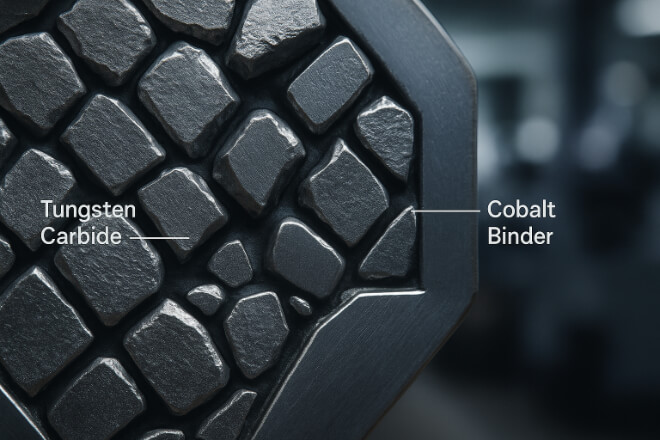
Tungsten carbide (WC) is a compound made from tungsten and carbon atoms, bonded together to create a dense, hard material.
It is usually combined with a small amount of cobalt or nickel as a binder. This combination produces a material that is:
Twice as stiff as steel
Very hard (close to diamond on the dureza escala)
Highly resistant to wear and heat
Because of these properties, tungsten carbide is a preferred choice for high-performance manufacturing tools and components.
Why Tungsten Carbide Matters in Manufacturing
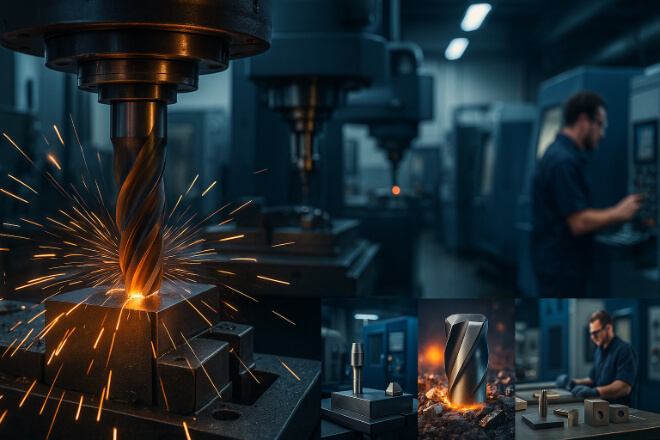
In manufacturing, downtime and poor tool performance cost money. Tungsten carbide offers benefits that directly improve productivity and profitability:
Longer Tool Life – Tools last much longer compared to high-speed steel (HSS) or other tool materials.
Faster Production – Higher cutting speeds reduce cycle times.
Better Precision – Maintains sharp edges for a long time, ensuring consistent quality.
Lower Costs per Part – Fewer tool changes and less scrap.
Key Applications of Tungsten Carbide in Manufacturing
| Solicitud | Example Tools or Components | Beneficio principal |
|---|---|---|
| Corte de metales | Turning inserts, end mills, drills | High speed and precision |
| Forming and Shaping | Dies, punches | Resistance to deformation |
| Minería y perforación | Drill bits, cutting picks | Impact and abrasion resistance |
| Piezas de desgaste | Valve seats, bushings | Corrosion and wear resistance |
Tungsten Carbide vs Other Tool Materials
| Propiedad | Carburo de tungsteno | Acero de alta velocidad (HSS) | Cerámica |
|---|---|---|---|
| Dureza | Muy alto | Medio | Muy alto |
| Tenacidad | Alto | Alto | Bajo |
| Resistencia al calor | Alto | Medio | Alto |
| Vida útil de la herramienta | Long | Corto | Medio |
Advantages for Decision-Makers

For managers and procurement teams, the benefits of tungsten carbide go beyond technical performance. Using WC tools and components can:
Improve ROI – Even with higher upfront costs, the savings from longer tool life and faster cycles often outweigh the expense.
Enhance Product Quality – Stable performance reduces rejects and rework.
Reduce Inventory Needs – Fewer replacements mean lower stock levels.
Support Sustainability Goals – Tungsten carbide can be recycled.
Common Grades and Their Uses
| Calificación | Contenido del aglutinante | Mejor para |
|---|---|---|
| Fine-Grain WC | 6–8% Cobalt | Finishing operations, small tools |
| Medium-Grain WC | 8–10% Cobalt | Mecanizado general |
| Coarse-Grain WC | 10–15% Cobalt | Heavy-duty cutting, interrupted cuts |
Recubrimientos para herramientas de carburo de tungsteno
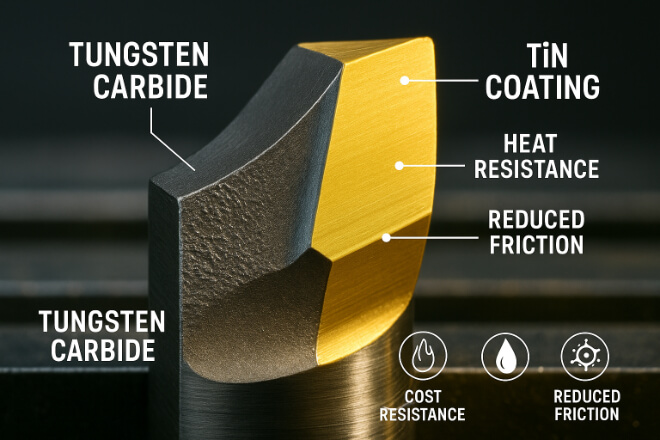
Many tungsten carbide tools are coated with materials like TiN, TiAlN, or diamond to further improve performance. These coatings can:
Reducir la fricción
Improve heat resistance
Prolongar la vida útil de la herramienta
Permitir el mecanizado en seco en algunos casos
Consideraciones de costos
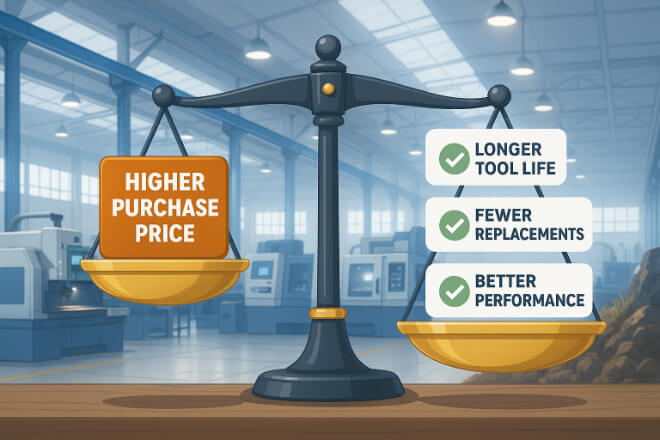
Tungsten carbide tools cost more than HSS tools, but their longer life and higher efficiency often make them more cost-effective in the long run.
When evaluating cost, decision-makers should consider:
Cost per part rather than just purchase price
Maintenance and downtime savings
Recycling credits from returned carbide tools
Sostenibilidad y reciclaje
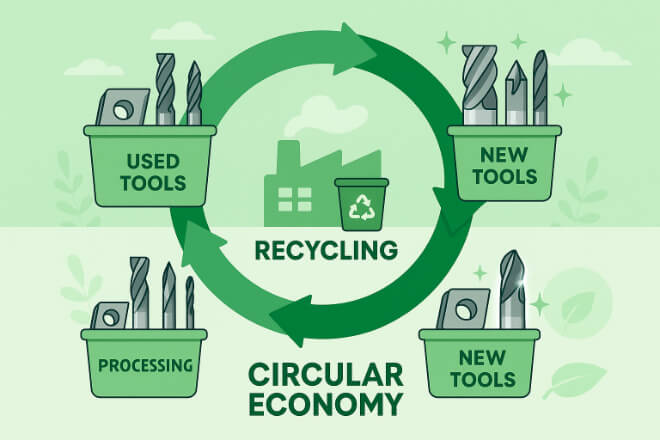
Tungsten carbide is 100% recyclable. Many suppliers offer buy-back programs for used tools.
Recycled tungsten carbide can be processed into new tools without losing quality, reducing both environmental impact and material costs.
Selecting the Right Tungsten Carbide Solution

When choosing tungsten carbide tools or components, consider:
Conclusión
Tungsten carbide plays a vital role in modern manufacturing. Its unique combination of hardness, toughness, and wear resistance makes it the go-to material for high-performance tools and wear parts.
For decision-makers, understanding the capabilities and applications of tungsten carbide can lead to better purchasing choices, lower production costs, and improved product quality.
By selecting the right tungsten carbide solution, companies can boost efficiency, extend tool life, and remain competitive in today’s demanding manufacturing environment.
Si desea conocer más detalles sobre alguna empresa, no dude en contactarnos. Contáctanos.
